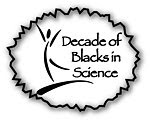Okay, I still have my head in the Stars…But it’s all for the good - enhanced science education and science exposure for Urban audiences. Beginning tomorrow, October is the Great Worldwide Star Count.
From the National Science Foundation Press Release
Star Count Goes Global
Schoolchildren, families and citizen scientists around the world will gaze skyward after dark from Oct. 20 to Nov.3, 2008, looking for specific constellations and then sharing their observations through the Internet.
The Great World Wide Star Count, now in its second year, helps scientists map light pollution globally while educating participants about the stars.
Light pollution is a modern day problem and mostly an urban problem. Our modern lives have ‘reset’ our natural body and sleep clocks so that we can get more done even when the sun goes down. That’s a good thing. But all of this light, when it should be dark has some serious implications on wildlife…so we’re back to urban ecology. Autumn is a natural signal to wild animals like birds that it is time to prepare for winter. But all of this light can fool them into thinking that it’s not quite autumn and they are unprepared for the winter cold. It is also a BIG problem for migrating waterfowl. The bright lights of big cities downtown areas can throw migrating birds off track. They get confused and can be taken off course. This jeopardizes their lives and the future success of their species if too many of them get disoriented or die.
Julie Zickefoose, a Naturalist and bird rescuer says “Now we need to get urban areas to dim or turn out lights at least during migration, like Toronto has--see flap.org for more details. Light pollution is an insidious thing--but so easy to address. Turn 'em off!” FLAP stands for Fatal Light Awareness Program to call attention to the problem of light pollution and migrating bird fatalities.
The Great World Wide Star Count is open to everyone, so join me and get involved. Download Activity Guides and Sign up to Watch the Sky. It’s a perfect science activity for Homeschoolers or as a Service Learning Project for High School Students. I really encourage older students to participate in Citizen Science projects like this and get independent or extra credit for it. Keep a journal of your activities and write up a report. Trust me. It’s hard for your teacher to say no if you have done so much great work.
Head outside with your family and friends and enjoy some quality time together. Visit your local science center or planetarium and participate in the event. As a child I was so excited about the Haley comet visit of 1986. I slept outside for days. I’m surprised I didn’t become an Astronomer. Stars have been the focal point of folk stories – like Slave Escape on the Underground Railroad and camp fire stories. Create some memories with your family. Point out the zodiac and other constellations.
It is so much fun… And it’s free. How can you beat that in this economy?
















4 comments:
Thanks for the shoutout! I'm so glad you're out there, spreading the good word, a public service blogger. Keep enlightening about lighting.
I came here from JZ's blog and want to tell you how much I admire what you do...I hope your ideas reach all of those budding environmentalists out there. As a matter of fact, I'll forward your blog address to my 26 year old daughter who majored in Env. Sc. but is stuck in a corporate banking job (ugh...).
Thanks for your enthusiasm for the welfare of the birds, too :o)
Mary
Julie and Mary: Thanks alot. I'm doing what I can. I hope I'm being heard and taken seriously.
Sadly, it's been cloudy all week, so I have yet to participate.
Post a Comment